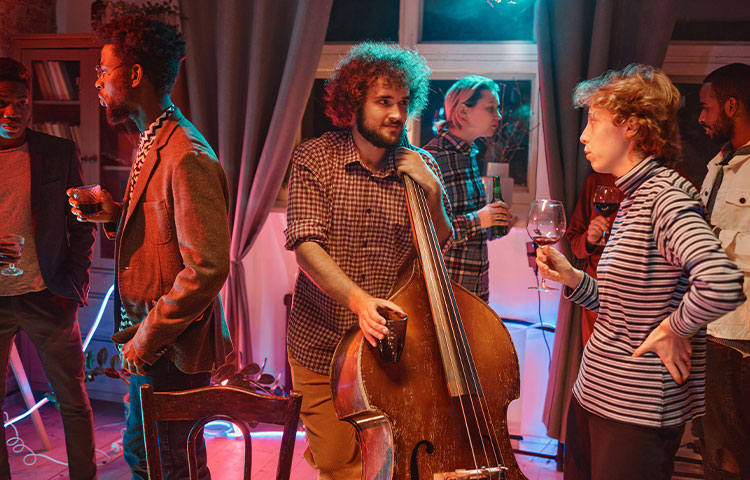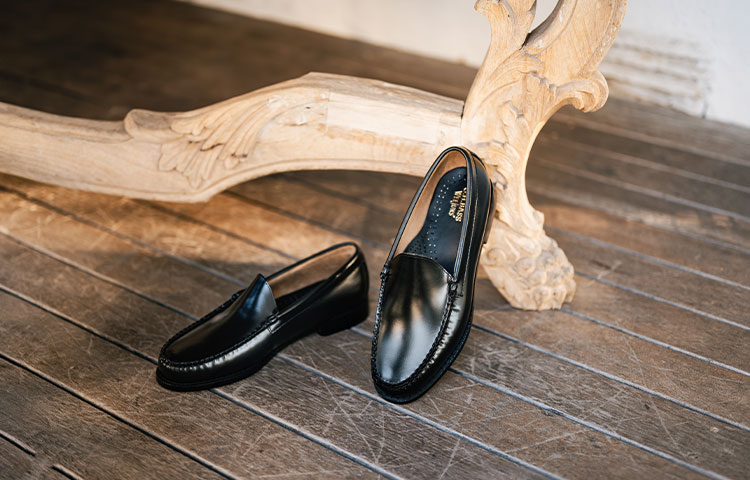Jazz Journeys with G.H.BASS

The history behind the jazz genre is so often debated, yet it holds quite an intriguing history.
Today, jazz is considered a relaxing music genre, comprising blue notes, polyrhythms and improvisation. However, when tracing the origins of the music genre, we found it to be quite an influential and rebellious movement.
The Roaring ‘20s and Fashion
Prior to the Roaring ‘20s, society still abided by conservative fashion trends. Particularly for women, who wore dresses no shorter than ankle length, and no form-fitting garments either.

However, with the introduction of jazz, this music genre brought on a sense of rebelliousness that made its way into the fashion realm. Thus, we saw the rise of the ‘flapper’ fashion trend for women which consisted of the iconic bob hairstyle, shorter skirts, and a tubelike silhouette that forwent the traditional feminine physique attributes and instead favoured a more free-spirited look.
Similarly, men's fashion also saw a radical transformation. Whilst previously, form-fitting and neutral colours were popular, the jazz era encouraged baggy suits with brighter colours that were deemed much more fun - much like the music style. It is this shift in fit and colour that led to the popularity of the zoot suit that emerged later in the 1940s.

Freedom of Movement
Jazz musicians soon became the leaders of fashion, as their music dominated the social scene. They opted for clothing that made them stand out and allowed them to perform their craft with no restrictions.
This, in turn, encouraged more and more people to visit various bars or clubs where jazz was performed. As a result, people had a reason to dress up, and more importantly, required attire that allowed for the freedom of movement.
Thus, jazz and fashion worked hand in hand to inform the cultural trends of the time. And of course, the iconic slip-on loafer had to make its way into the scene.

Slip-on Loafers
Although G.H.BASS has introduced numerous original footwear icons to generations of outdoor sportsmen, explorers, and cultural tastemakers, they certainly made headlines in the fashion industry.
After all, the design is stylish, timeless, and allows for ease of use with its slip-on features. In fact, many celebrities such as James Dean, Grace Kelly, and Miles Davis were known to sport their Weejuns.
This goes to show how such celebrities didn’t merely create great influence in their industries, but also in the realm of fashion. As people became more and more enthralled by jazz, they quickly began to replicate the style of the musicians that produced this new and exciting, rebellious music.
Jazz and Weejuns Today
Today, the music genre of jazz has grown significantly, branching off into many categories such as smooth jazz, jazz funk, free jazz, jazz fusion, and more.
Alongside the evolution of jazz, G.H.BASS has also seen remarkable growth. By introducing a variety of footwear styles, they continue to influence various fashion trends today. The timeless appeal of Weejuns, much like jazz, has endured through the decades, remaining a staple in the world of fashion.

As we look at the rich history of jazz and the iconic Weejuns, it's clear that both have left an indelible mark on culture. Their stories are intertwined, reminding us of a time when music and style came together to create something truly special.
So, if you will be attending a jazz concert anytime soon, consider the exciting history of this music genre as you slip on your very own G.H.BASS loafers and prepare to dance the night away!










